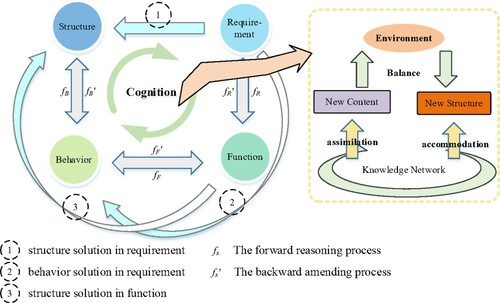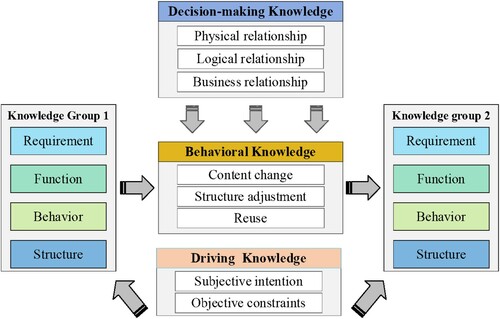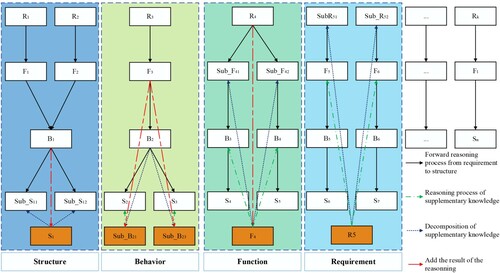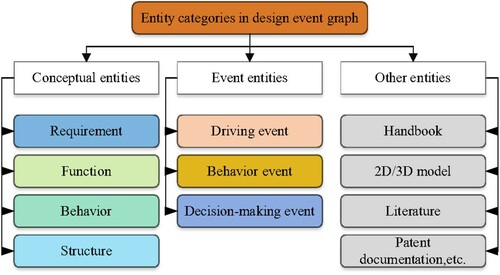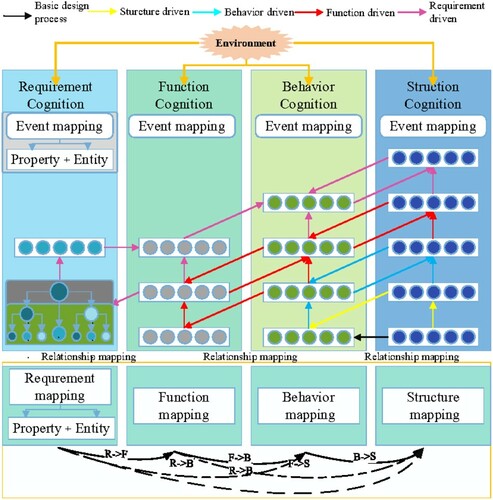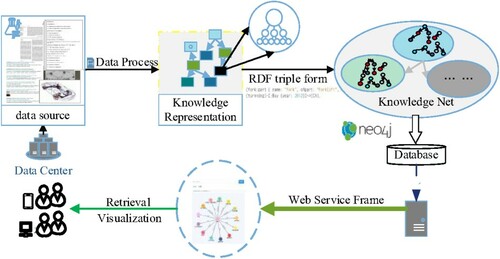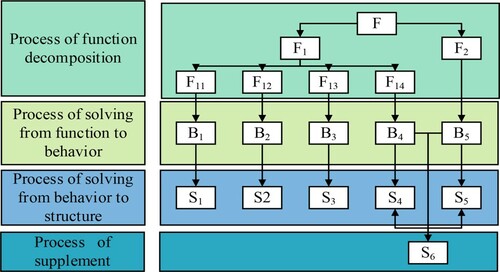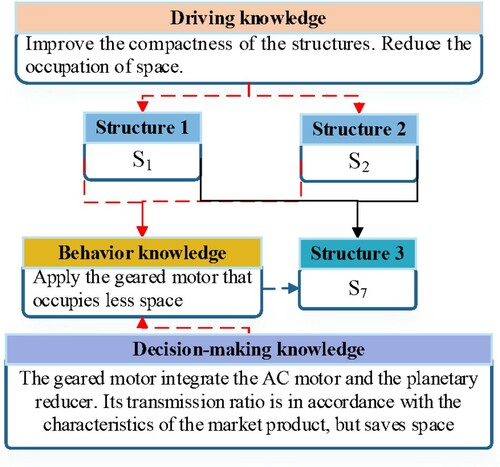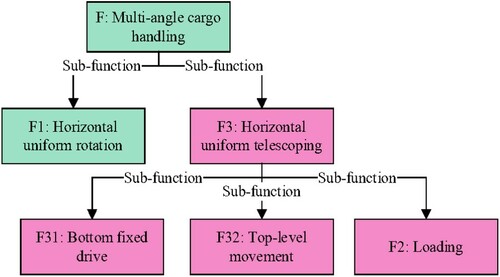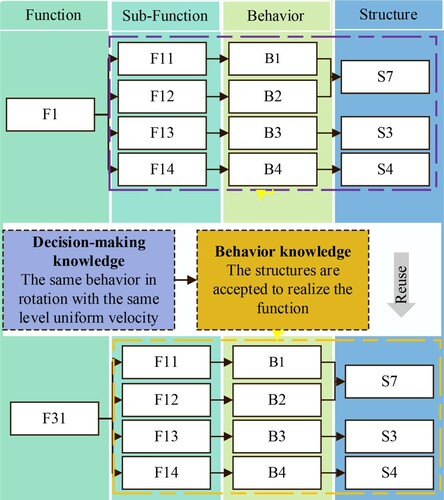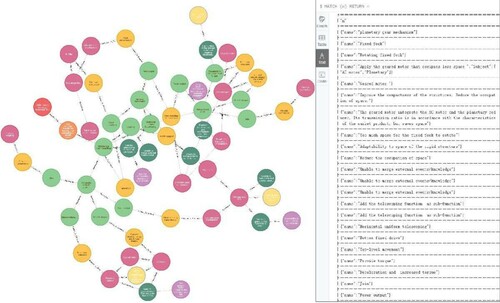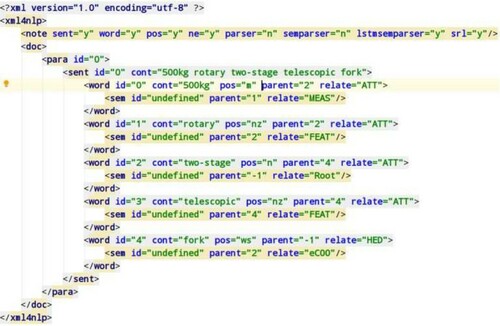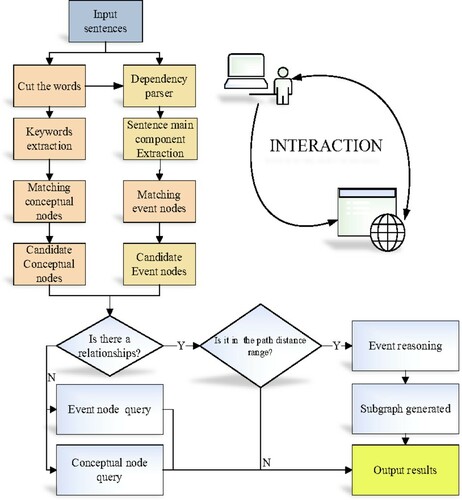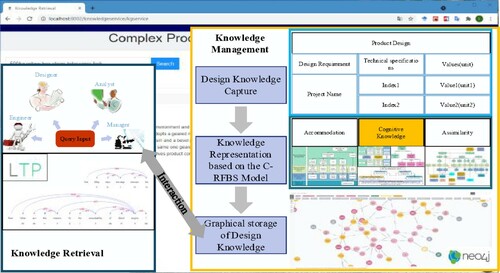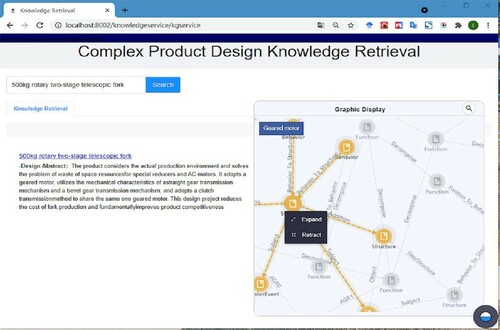Figures & data
Table 1. Cognitive characteristics of knowledge network.
Table 2. Concepts and their interpretations during the cognitive process in design.
Table 3. Different categories of event relationships in the design event graph.
Figure 5. A schema for representing the relationships between event entities and conceptual entities.
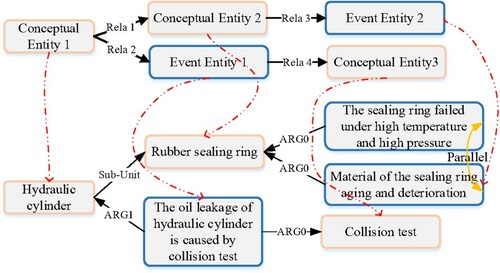
Table 4. A requirement about 500 kg rotary fork.
Table 5. Contents and symbols of the Function, Behavior and Structure nodes.
Table 6. Comparison of the C-RFBS model with several similar previous models.

